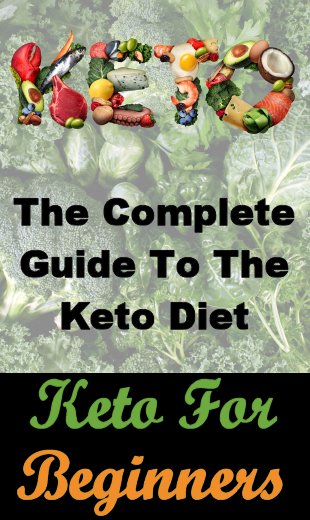35 Health Advantages Of Eating Garlic
While many people know and use garlic (which is sometimes known as the “stinking rose”) as a flavouring agent when cooking, this vegetable has many health benefits too, which is what this article addresses.
It’s related to other plants in the onion family, including chives, leeks, and shallots, and while technically it is a vegetable, it is more typically used like a herb.
And it’s been used by many different cultures (including the Babylonians, Chinese, Egyptians, Greeks, and Romans) for thousands of years.
So, what are those health benefits I mentioned?
Well many of them stem from a compound called allicin, which is released via enzymatic action from a substance called alliin. This compound is sulphur-based and is what gives garlic its distinctive taste and aroma.
- Antibacterial. Killing bacteria is one of the many properties of allicin.
- Antifungal. Its ability to get rid of fungus is also due to the allicin compound.
- Antiviral. Completing the trifecta of benefits from allicin is its ability to kill viruses.
- Arthritis. Garlic’s anti-inflammatory properties can help provide relief for issues such as osteoarthritis.
- Asthma. Some people report that drinking a glass of milk that contains three cloves of boiled garlic can relieve their asthma symptoms.
- Athletic Performance. Yes, garlic has long been used as a performance booster, both by labourers and Olympic athletes (in ancient Greece), as a means of reducing fatigue and increasing work capacity.
- Baby Weight. Some pregnant women have found that consuming garlic can help reduce the risk of low-birth-weight babies.
- Bacterial Vaginosis. Garlic can prevent the growth of candida vaginitis, which is one cause of BV.
- Blood Pressure. Studies have shown that consuming about four cloves of garlic (or the equivalent) can lower blood pressure in those who suffer from hypertension.
- Blood Sugar Stabilisation. One study found that garlic can lower your blood sugar levels, which means it can reduce the risk of developing diabetes, and help those who are already suffering from it.
- Bone Health. There are studies that show garlic can slow down bone loss.
- Cardiovascular Health. Research supports the idea that garlic can help protect your heart from conditions such as atherosclerosis, hyperlipidemia, hypertension, and thrombosis.
- Cholesterol. Garlic has been shown to lower levels of the “bad” LDL cholesterol, although it has no known effect on the “good” HDL cholesterol (or triglycerides).
- Detoxification. The sulphur content of garlic may help eliminate toxic heavy metals from your body.
- Digestion. Eating raw garlic on a daily basis can help with all sorts of digestive issues, including relieving gas, colitis, diarrhoea, dysentery, and expelling parasites such as worms. It is also believed to help get rid of “bad” bacteria from your gut while not harming the “good” ones.
- Eye Health. Several of the nutrients contained in garlic (e.g. quercetin, selenium, vitamin C) can help keep your eyes healthy.
- Free Radicals. Garlic’s antioxidant properties have been shown to help protect against the oxidative damage caused by free radicals. It has been suggested by some that this may also reduce the risk of Alzheimer’s and other forms of dementia.
- Gingivitis. Chewing on a few garlic cloves may help with the bleeding, inflammation and swelling associated with this condition.
- Herpes. Some people report that applying crushed garlic to affected areas can relieve the symptoms of herpes.
- Immune Boosting. Garlic can give your immune system a boost and has been shown, in some studies, to reduce both the frequency and duration of colds.
- Impotence. Because garlic can improve blood circulation, it can help with some impotency issues such as erectile dysfunction.
- Iron Absorption. Garlic can help your body to better absorb iron, one of the many vital nutrients required for optimal functioning.
- Kidney Health. Garlic has been shown to kill bacteria called Pseudomonas aeruginosa, which can cause kidney infections.
- Libido. Garlic is reported to have aphrodisiac and libido-enhancing properties (although you might want to make sure you both have garlic beforehand, which makes the after-effects less unpleasant).
- Liver Health. Garlic contains a compound called S-ally-mercapto cysteine, which is believed to help reduce the risk of hepatic injury.
- Low Calorie Content. One clove of garlic (which weighs about 3 grams) has very few calories – about four or five.
- Memory. Garlic can increase the production of brain serotonin, which is a neurotransmitter that can improve cognitive performance.
- Mosquito Repellent. It turns out that garlic is a smell that mosquitoes do not like – unless, presumably, they are French or Italian mosquitos. 🙂
- Nutrition Content. In a world where so many people are deficient in numerous vital minerals and vitamins, it’s good to know that just one clove of raw garlic can provide 2% of your daily manganese, 1% of your selenium, 2% of vitamin B6, and 1% of vitamin C. You’ll also find 0.2 grams of protein and 1 gram of carbs.
- Relief From Allergies. It is believed that garlic inhibits the release of histamines, which can trigger itching, for example.
- Sinusitis. This may be one of those old wives’ remedies, but it is thought that inhaling chopped garlic vapours using a steamer can provide relief from sinusitis. Coincident with this, some people have found it also reduces snoring.
- Skin Health. Garlic, when mixed with honey (preferably raw, Manuka honey) and turmeric, can help with symptoms of various skin conditions, including acne and psoriasis. It can also help protect your skin from the damage caused by some ultraviolet rays.
- Toothache. The application of a garlic clove near the affected area can provide relief in an emergency (although my preference would be to use clove oil, which is always in my medicine cabinet).
- UTIs. Garlic can help fight urinary tract infections.
- Wound Healing. Placing crushed garlic on infected wounds can provide relief.
In addition, although for legal reasons you have to be careful mentioning the C-word, the National Center for Complementary and Integrative Health (NIH) states that: “Some studies indicate that certain groups of people who eat more garlic may be less likely to develop certain cancers, such as stomach and colon cancers. However, garlic in dietary supplement form has not been shown to help reduce the risk of these cancers. The National Cancer Institute recognizes garlic as one of several vegetables with potential anticancer properties but does not recommend using garlic dietary supplements for cancer prevention.”
That a government organization even goes this far is unusual and revealing, but I won’t say any more on this particular subject.
Caveats
There are a few things to be aware of:
- Odour. Garlic is, of course, well known for its pungent smell, which can linger on your breath long after you’ve eaten it. It can also seep out of your skin causing a form of body odour. This means you do need to be a bit careful about when you eat it – right before a job interview, for example, might not be the best option.
- Prevention Of Blood Clotting. In high doses, garlic can interfere with the creation of blood clots. It is therefore recommended that any form of garlic supplementation be stopped one week before surgery.
- Skin Problems. Although ingesting garlic can help with skin issues, getting raw garlic directly on your skin can sometimes lead to blisters and rashes, so use it in this way carefully.
How Should You Consume Your Garlic?
There are various ways you can get your garlic fix, including:
- Raw. Chewing raw garlic cloves is often considered to be the best way to eat garlic, but it can be tough to chew, and it is both strong and hot.
- Whole. Some people try to solve the problems of chewing raw garlic cloves by swallowing them whole instead. However, the chewing (or crushing) is what releases the allicin (i.e. the main beneficial component), and you also need to be careful because there have been cases where people have almost choked to death when the whole clove got stuck in their oesophagus.
- “Pills”. By pills, I mean chopping fresh garlic into tiny pieces that are about the size of most pills. These can then be safely swallowed with a drink.
- Molar Crush. This method entails placing a clove of garlic between your molars and slowly apply pressure until the skin of the clove breaks and releases its juices (and allicin). It’s not technically a method of eating garlic, since you never actually swallow it.
- Supplements. These may come as pills or capsules, or you can a garlic oil or paste, but as usual, it’s best to get it directly from the source – the garlic clove itself.
- Cooking. And finally, of course, you can use garlic in cooking, but be aware that the health benefits are reduced compared to eating it raw. On the plus side, you can add garlic to so many dishes (I’ve even seen a recipe for garlic ice cream) that it’s not difficult to incorporate it into your diet.
Conclusion
I have loved the flavour and smell of garlic for as long as I can remember.
I used to go to an Italian restaurant in my home town that made delicious garlic bread – which you could smell from two or three blocks away.
When I moved to the US, my second wife could not bear its smell or taste, so I had to put my garlic habit on hold.
Now that I’m alone again, after her recent death, I am eating garlic again whenever I can – because my dogs apparently don’t care about the smell.
But seriously, garlic has so many health benefits, and while it may be an acquired taste, I think it’s worthwhile developing a liking for this pungent but useful vegetable.
And finally, don’t forget to check out these garlic recipes that I’ve found for you.
Additional Resources
These are suggestions for those who wish to delve deeper into any of the above:
- Garlic Cookbook (and more)







